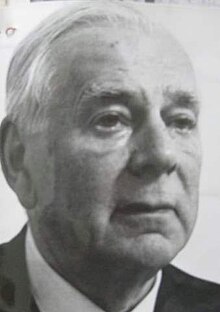
Mary Williams, who wrote pseudonymously as Kate Carew, was an American caricaturist self-styled as "The Only Woman Caricaturist". She worked at the New York World, providing illustrated celebrity interviews.

Xavier Timoteo Martínez was a Mexican-born American artist active in California the late 19th and early 20th century. He was a well-known bohemian figure in San Francisco, the East Bay, and the Monterey Peninsula and one of the co-founders of two California artists' organizations and an art gallery. He painted in a tonalist style and also produced monotypes, etchings, and silverpoint.
Percy Gray was an American painter. At the 1915 Panama–Pacific International Exposition he won a bronze medal for his watercolor Out of the Desert, Oregon. Gray's artwork is held in the permanent online collections of several museums, including the Monterey Museum of Art.
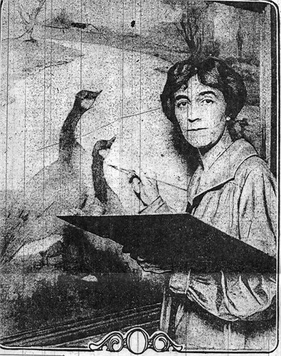
Rowena Fischer Meeks Abdy was an American modernist painter. She primarily painted landscapes and worked in Northern California.

Anne Wardrope Brigman was an American photographer and one of the original members of the Photo-Secession movement in America.

Guy Orlando Rose was an American Impressionist painter and California resident, who received national recognition in the late 19th and early 20th centuries.

William Frederic Ritschel, also known as Wilhelm Frederick Ritschel, was a California impressionist painter who was born in Nurenberg, Kingdom of Bavaria.
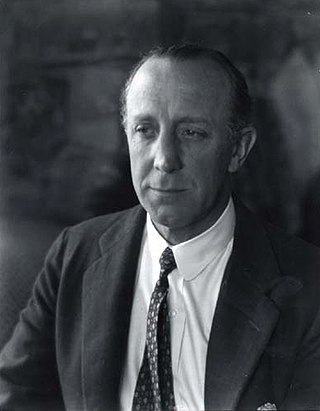
Paul Hampden Dougherty was an American marine painter. Dougherty was recognized for his American Impressionism paintings of the coasts of Maine and Cornwall in the years after the turn of the 20th century. His work has been described as bold and masculine, and he was best known for his many paintings of breakers crashing against rocky coasts and mountain landscapes. Dougherty also painted still lifes, created prints and sculpted.

Francis John McComas (1875–1938) was an Australian-born artist who spent most of his adult life in California, receiving some national recognition. He was one of the few California artists invited to exhibit in the 1913 International Exhibition of Modern Art in New York.

Arthur Putnam was an American sculptor and animalier who was recognized for his bronze sculptures of wild animals. Some of his artworks are public monuments. He was a well-known figure, both statewide and nationally, during the time he lived in California. Putnam was regarded as an artistic genius in San Francisco and his life was chronicled in the San Francisco and East Bay newspapers. He won a gold medal at the 1915 San Francisco world's fair, officially known as the Panama–Pacific International Exposition, and was responsible for large sculptural works that stand in San Francisco and San Diego. Putnam exhibited at the Armory Show in 1913, and his works were also exhibited in New York, Philadelphia, Chicago, Paris, and Rome.

Anne Bremer was a California painter, influenced by Post-Impressionism, who was called "the most 'advanced' artist in San Francisco" in 1912 after art studies in New York and Paris. She was described in 1916 as "one of the strong figures among the young moderns" and later as "a crusader for the modern movement." She had numerous solo exhibitions, including one in New York.

Pedro Joseph de Lemos was an American painter, printmaker, architect, illustrator, writer, lecturer, museum director and art educator in the San Francisco Bay Area. Prior to about 1930 he used the simpler name Pedro Lemos or Pedro J. Lemos; between 1931 and 1933 he changed the family name to de Lemos, believing that he was related to the Count de Lemos (1576–1622), patron of Miguel de Cervantes. Much of his work was influenced by traditional Japanese woodblock printing and the Arts and Crafts Movement. He became prominent in the field of art education, and he designed several unusual buildings in Palo Alto and Carmel-by-the-Sea, California.

Mary Evelyn McCormick was an American painter.
James Blanding Sloan, also known as Blanding Sloan, was an American etcher, printmaker, theatrical designer, educator, painter, and puppeteer.
Robert Boardman Howard (1896–1983), was a prominent American artist active in Northern California in the first half of the twentieth century. He is also known as Robert Howard, Robert B. Howard and Bob Howard. Howard was celebrated for his graphic art, watercolors, oils, and murals, as well as his Art Deco bas-reliefs and his Modernist sculptures and mobiles.
Ralph Helm Johonnot (1880–1940) was an American artist, designer, and arts educator, he is known for his educational series on color and interior decoration. He created paintings and prints, within the Arts and Crafts movement of still life and landscapes, as well as creating decorative work with his wife Salome Lavinia Johonnot. Together with Salome, they traveled to give educational lectures on the arts and created two private art schools, the Ralph Johonnot Studio in Richmond, California and Johonnot Summer School of Design and Hand Work in Pacific Grove, California. He was active in the arts throughout the state of California from approximately 1912–1940.

Theodore Criley was an American hotel manager and landscape artist. He joined the art colony in Carmel-by-the-Sea, where he was a watercolorist, portrait painter, and wood engraver. His artwork was well received by fellow artists Jennie V. Cannon and Percy Gray, as well as art critics for the San Francisco Chronicle and the Oakland Tribune. His work can be seen at the Mills College Art Museum in Oakland, California.
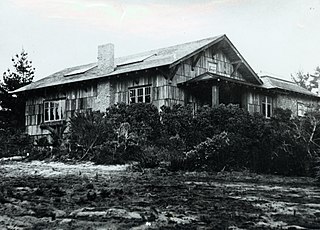
The Carmel Arts and Crafts Club was an art gallery, theatre and clubhouse founded in 1905, by Elsie Allen, a former art instructor for Wellesley College.
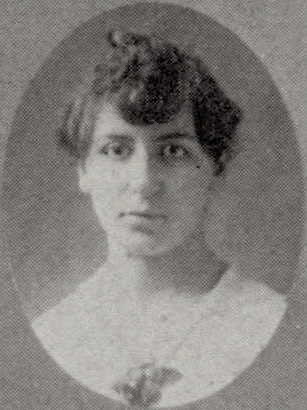
Cleo Theodora Damianakes, nom de plume Cleon or Cleonike, was an American etcher, painter, and illustrator. She was widely known for designing dust jackets for Lost Generation writers in the 1920s and early 1930s, including cover art for the first editions of Ernest Hemingway's The Sun Also Rises and A Farewell to Arms, as well as F. Scott Fitzgerald's All the Sad Young Men, which were published by Scribners. Other authors she designed covers for included novelists such as Zelda Fitzgerald, Conrad Aiken, John Galsworthy, and Arthur B. Reeve.
Charles Robert Winston was an American jeweler, sculptor, and educator. He was known for his organic forms and sculptural jewelry in 1950s and 1960s. Winston was a co-founder of the Metal Arts Guild of San Francisco, a non-profit, arts educational organization. In 1997, he was honored as a Fellow of the American Craft Council.
